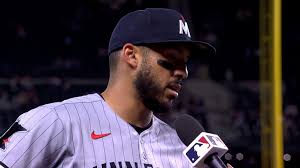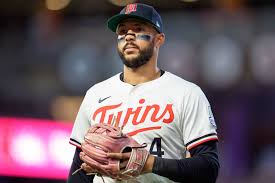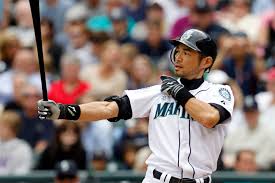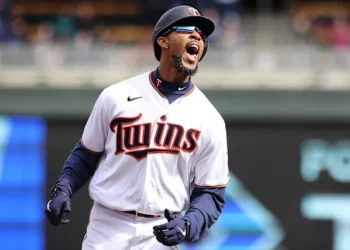Next season, the Minnesota Twins need a better alternative to Byron Buxton than they had in their outfield in 2024. Could the answer to those problems lie right down I-94?
The switch-hitting Perkins, 28, has played parts of the last two seasons for the Brewers, after signing with them as a minor-league free agent after the 2022 season. He’s only batted .234/.318/.337 across 602 plate appearances, which would make him underqualified for everyday inclusion in the lineup. However, he’s cobbled together that significant a share of playing time because almost no one in baseball can match his combination of athleticism, efficiency, and IQ in center field, inning for inning. He was worth 9 Defensive Runs Saved in fewer than 1,000 innings in center field, including some clutch plays that were worth more than that style of valuation can capture.
Firstly, unlike Byron Buxton, Perkins has exquisite feel for the wall. When he goes back on the ball, he does it with a mixture of confidence and control, gliding toward the wall, jumping off one foot, and changing the angle of his body to minimize the risks both of having the ball jarred out of his glove and getting injured in a collision.
It’s relatively easy to make such plays at one’s home park, where the dimensions and the flight of fly balls are familiar. Perkins, however, often took his homer-robbing show on the road in 2024. Even when a ball was hit to a particularly idiosyncratic place, he seemed to have charted his course and to make small adjustments with ease and grace.
Perkins also charges balls in front of him (even surefire hits) exceptionally aggressively, though. He racked up seven outfield assists in relatively modest playing time in 2024, but the biggest of them by far was this kill of a runner trying to score the tying run in the ninth inning of a game in the first half.
These are just a few examples, but they capture what Perkins can do—including things even Buxton can’t, at this stage, and which all the team’s secondary options and alternatives to Buxton failed to do in 2024. He covers ground effortlessly, has a strong arm, and makes plays even when they require last-second changes of direction or orientation of the body. He’s situationally aware and has a nose for the out an opponent isn’t anticipating.
Perkins’s offensive game is also slightly more dynamic than his overall numbers suggest. He’s a good bunter and a great baserunner, and although he doesn’t lift the ball consistently enough to generate big power numbers, he has the ability to cut it loose and hit the ball a long way. All of this makes him an invaluable role player, but the Brewers have a crowded outfield picture, with Jackson Chourio, Christian Yelich, Sal Frelick, and Garrett Mitchell also on board, and a couple of top prospects knocking on the door.
Milwaukee needs help in the starting rotation, and the Twins need to shed some salary to give themselves more financial flexibility in building a 2025 winner. Could the two Upper Midwest neighbors find a fit on a trade?
Perkins is still not yet eligible for arbitration, so he’d be cheaper and more controllable than previous acquisitions in the same vein, Michael A. Taylor and Manuel Margot. That would make him more expensive to acquire, in terms of talent, but again, the Twins need to offload some money, anyway. They could spin either Joe Ryan or Bailey Ober to Milwaukee for Perkins and a prospect, in a move somewhat reminiscent of the Jorge Polanco trade last winter—though grander in scale and better calibrated to their needs. It would have to be Perkins and a somewhat valuable secondary piece, for a player like Ryan or Ober, but keeping in mind that Perkins would fill a crucial immediate need and be controllable for up to five years, as well as costing less than Ryan or Ober, it wouldn’t need to be such a good prospect as to cause the Brewers to walk away.
Though he did stay on the field much better in 2024 than in previous years, Buxton only proved that he is no longer the defensive ace he once was. It’s too soon to ask him to permanently move to a corner, but he could do so in a part-time capacity this year, in addition to spending time as the designated hitter. That would best serve the team in terms of winning the games he plays, as well as keeping him healthy enough to play more games—as long as they bring in a player who can adequately sub for him in center on a regular basis. Surveying their options throughout baseball, the best one available might be right next door.











Discussion about this post